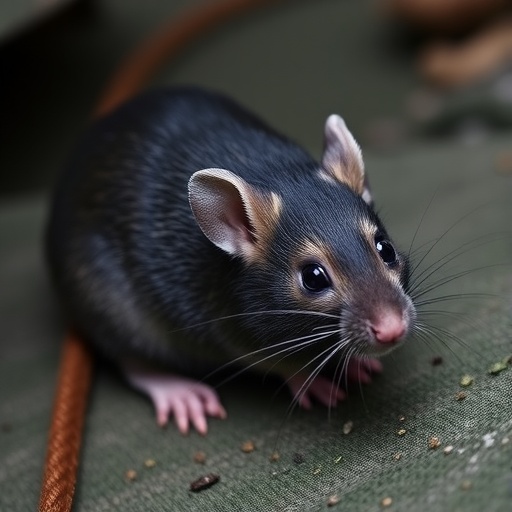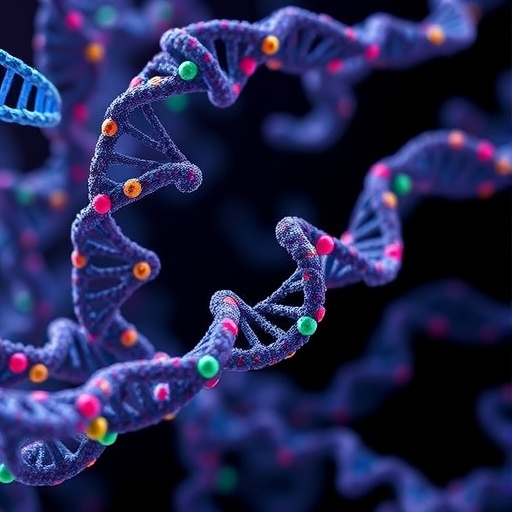Recent research has highlighted the potential of a traditional Chinese medicinal herb, Atractylodes lancea, in addressing critical health issues arising from metabolic syndrome. This fascinating exploration was conducted by a team of researchers, including Yang, Hong, and Yoon, who documented their findings in a comprehensive study. Metabolic syndrome is an alarming health crisis, characterized by a cluster of conditions such as obesity, hypertension, dyslipidemia, and insulin resistance. These conditions significantly elevate the risk of cardiovascular diseases and type 2 diabetes, making effective therapeutic interventions urgently needed.
In their study, the researchers aimed to investigate the therapeutic applications of Atractylodes lancea specifically in the context of cardio-renal function restoration. The significance of the heart and kidneys in maintaining overall health cannot be understated. Both organs work collaboratively to ensure proper blood filtration and circulation, and any dysfunction in one can profoundly impact the other. By using an animal model, the research team sought to evaluate how Atractylodes lancea could mitigate the adverse effects of diet-induced metabolic syndrome on these vital organs.
The approach taken by the researchers involved a controlled experiment with rats that had been put on a high-fat diet to induce metabolic syndrome. This model is crucial because it mirrors the progressive nature of the syndrome in humans, allowing for a practical assessment of potential treatments. Over a specific period, the researchers administered Atractylodes lancea extracts to some of the rats, while others received no treatment, thereby providing a clear comparison of results.
One of the remarkable outcomes of this study was the apparent restoration of cardio-renal functions in the rats treated with Atractylodes lancea. Notably, there was a marked reduction in common metabolic syndrome indicators, such as body weight, blood pressure, and serum glucose levels. These findings are particularly essential, emphasizing the herb’s potential role in weight management and overall metabolic health. The rats receiving the treatment exhibited signs of inflammation reduction in cardiovascular and renal tissues, which aligns with other studies suggesting that Atractylodes lancea possesses anti-inflammatory properties.
A closer examination of the biochemical markers indicated that Atractylodes lancea’s beneficial effects could be linked to its ability to modulate oxidative stress levels in the body. Oxidative stress is a known contributor to cellular damage and is closely associated with the pathophysiology of both cardiovascular and renal diseases. The extract demonstrated a remarkable ability to enhance antioxidant enzyme activities in the treated rats, thereby combating oxidative damage and promoting cellular health.
Moreover, the study delved into the immunomodulatory effects of Atractylodes lancea, highlighting how the herb appears to influence immune responses. Since inflammation plays a pivotal role in metabolic syndrome, understanding the immunological benefits of the herb can uncover new dimensions of its therapeutic potential. The extract’s ability to adjust the balance of pro-inflammatory and anti-inflammatory cytokines stands out as a critical factor for achieving homeostasis in affected organs.
The research findings advocate for Atractylodes lancea not merely as a traditional remedy but as a scientifically validated treatment option. The study underscores the importance of integrating traditional medicine with modern pharmacological practices. Such an interdisciplinary approach paves the way for developing novel therapeutics that are both effective and culturally relevant, catering to diverse patient populations.
Furthermore, it is essential to consider the potential for these findings to influence future pharmacological developments. The implications of this research suggest that active compounds in Atractylodes lancea could lead to the formulation of new drugs aimed explicitly at managing metabolic syndrome and its complications. More extensive clinical trials will be necessary to verify these effects in human populations, but the preliminary results are undoubtedly promising.
In conclusion, this research represents a significant leap forward in understanding the complex relationship between traditional herbal medicines and modern healthcare challenges. Atractylodes lancea has emerged as a frontrunner in the quest for effective treatments against the insidious effects of metabolic syndrome. This study not only highlights the herb’s potential but also reinforces the need for continued exploration into the natural compounds that have been used in traditional healing.
Beyond its therapeutic implications, this research sheds light on the growing interest in herbal medicine as a complement to conventional treatments. As individuals increasingly seek alternative or adjunct therapies, Atractylodes lancea stands as a beacon of hope, illustrating that nature often holds the key to unlocking new health solutions. The blend of traditional knowledge with scientific inquiry may just yield the breakthrough needed to combat the metabolic syndrome epidemic.
Subject of Research:
Functional restoration of cardio-renal systems using Atractylodes lancea in a metabolic syndrome model.
Article Title:
Therapeutic potential of Atractylodes lancea in restoring cardio-renal function in rats with diet-induced metabolic syndrome.
Article References:
Yang, Y.J., Hong, M.H., Yoon, J.J. et al. Therapeutic potential of Atractylodes lancea in restoring cardio-renal function in rats with diet-induced metabolic syndrome. BMC Complement Med Ther 25, 338 (2025). https://doi.org/10.1186/s12906-025-05074-8
Image Credits: AI Generated
DOI:
Keywords: Cardiovascular health, renal function, metabolic syndrome, Atractylodes lancea, traditional medicine, herb therapy, oxidative stress, inflammation.
Tags: animal model researchAtractylodes lanceacardio-renal function restorationcardiovascular disease preventiondyslipidemia and insulin resistanceherbal therapy for healthhigh-fat diet effectsmetabolic syndrome treatmentobesity and hypertensiontherapeutic interventions for metabolic disorderstraditional Chinese medicinetype 2 diabetes management





